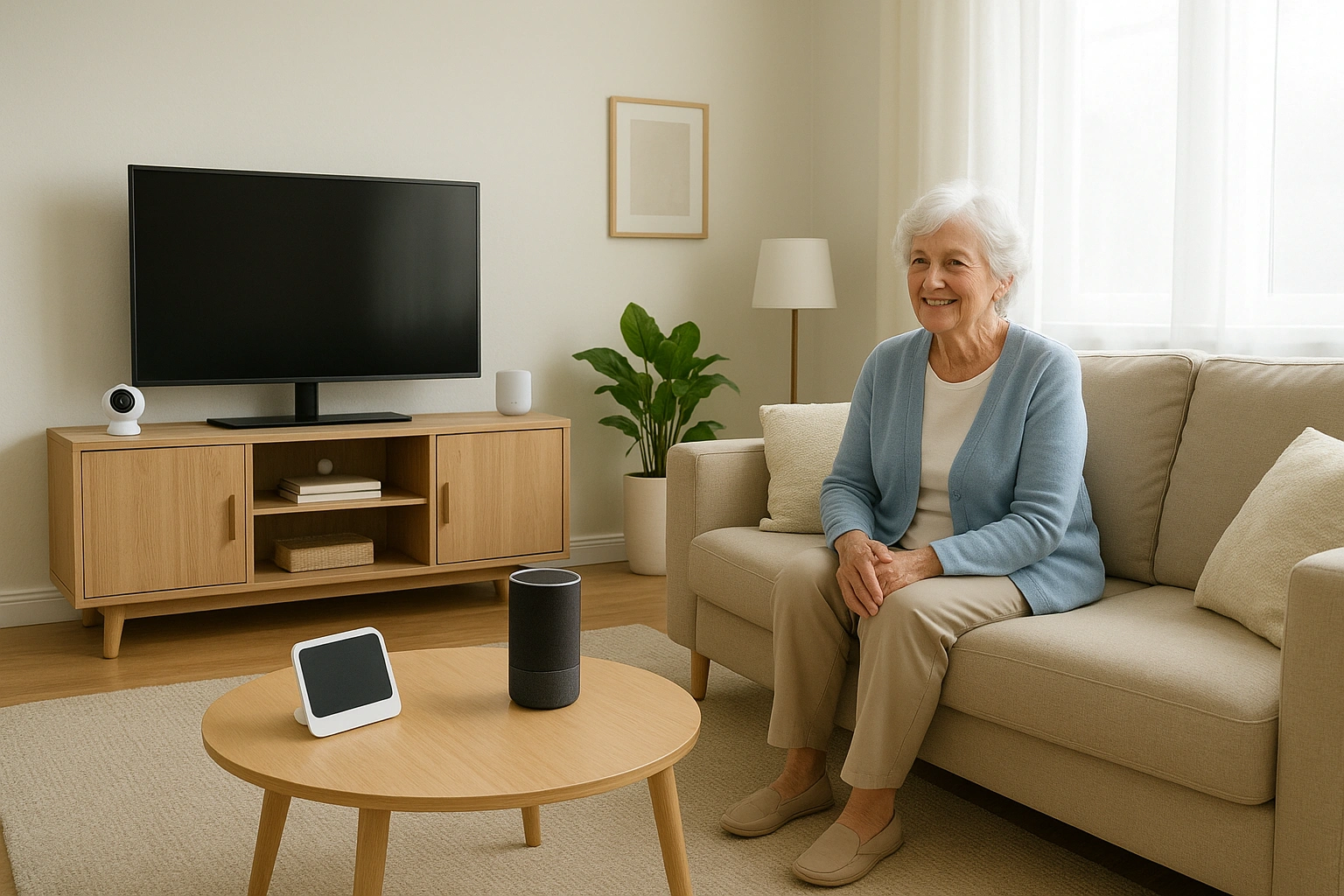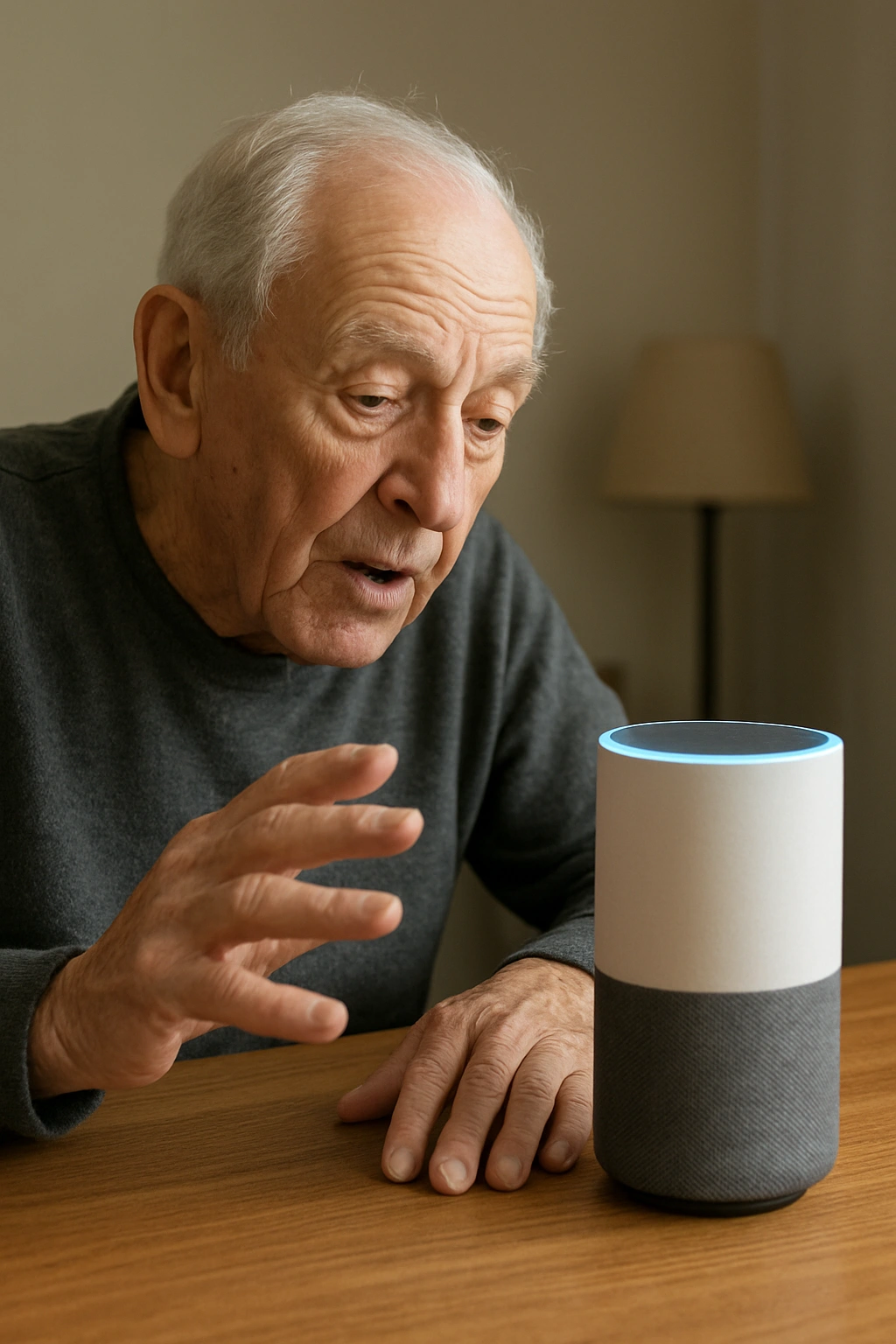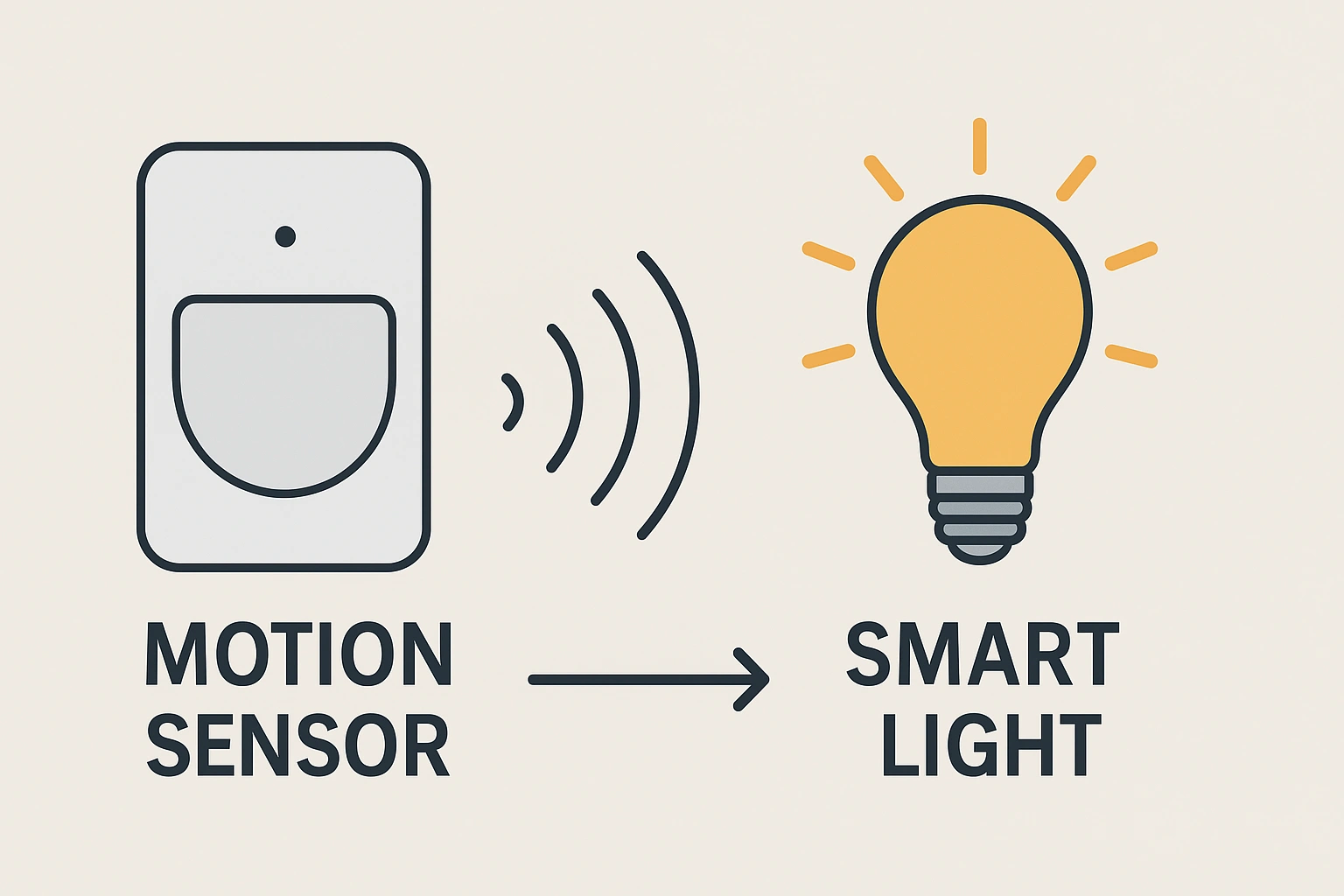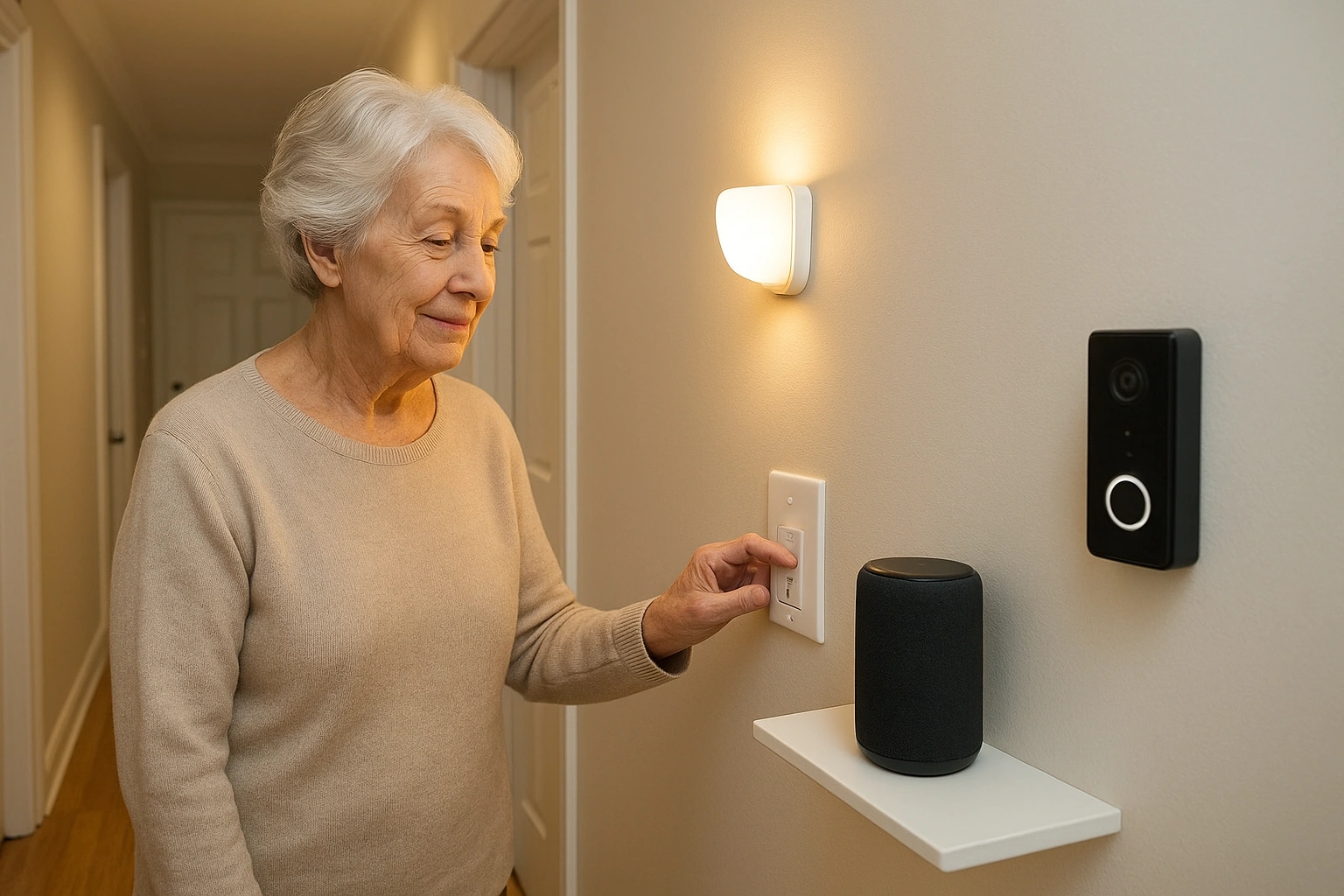
Every year, more than one in four older adults experiences a fall, a serious event that can change life in an instant. For families, the worry about such incidents—or other hazards like an unattended stove or missed medication—can create constant anxiety. Smart home devices offer a practical way to reduce these fears, providing alerts and monitoring that help seniors stay safe while maintaining independence. By using smart home devices strategically, families can feel reassured knowing help is available if an emergency arises. Thoughtful implementation of smart home devices allows your loved one to live confidently at home while giving you peace of mind.
What if your loved one’s home could actively help keep them safe? That’s the promise of smart home devices today. This guide will show you how smart home devices can support seniors in living safely and independently. We’ll focus on practical, easy-to-use smart home devices that provide real peace of mind without overwhelming complexity. By the end, you’ll understand how to combine smart home devices effectively to create a simple, reliable safety net for the person you love.
What Are Smart Home Devices for Seniors?
This isn’t about complicated, futuristic systems. At its core, a smart home for seniors is made up of simple, consumer-friendly smart home devices that automate everyday tasks, provide helpful alerts, and make the home safer to navigate. By using smart home devices like voice assistants, smart lighting, and smart plugs, families can address the unique challenges of aging. Thoughtfully applied, these smart home devices create a supportive environment that enhances independence and peace of mind.
The key is that these devices can be controlled remotely via a smartphone app or, more importantly for many seniors, with simple voice commands. A report on smart home adoption from Statista shows explosive growth in this market, which has made these devices more affordable, reliable, and user-friendly than ever before. The focus for 2025 is on creating an ecosystem of devices that work together to create a seamless, supportive environment.
Why a Smart Home is a Game-Changer for Aging in Place
The decision to integrate this technology is a proactive step towards greater safety, independence, and peace of mind for the entire family.
Drastically Reducing the Risk of Falls
Falls are the leading cause of fatal and non-fatal injuries for older adults. Smart lighting that automatically illuminates a path to the bathroom at night, or the ability to turn on a lamp with a voice command instead of fumbling for a switch in the dark, can be a literal lifesaver.
Providing an Invisible Safety Net
Smart devices can monitor for potential hazards. A smart smoke detector can alert your phone, not just the home. A smart plug can ensure a space heater is never left on accidentally. This creates a layer of protection that works 24/7, providing immense peace of mind for family caregivers.
Empowering Seniors with Control and Independence
For a senior with arthritis or mobility issues, the ability to lock the front door, adjust the thermostat, or call a relative using only their voice is incredibly empowering. It reduces reliance on others for simple tasks, fostering a greater sense of autonomy and dignity. This is a core part of modern aging strategies, as explored on sites like peternakan.web.id.
The Building Blocks of a Senior-Safe Smart Home

1. The Hub: A Voice Assistant
This is the brain of your system. A device like an Amazon Echo Dot or Google Nest Mini is essential. It allows for hands-free control of all other devices and serves as a vital communication lifeline for making calls without needing to reach for a phone.
2. Smart Lighting
Perhaps the most critical safety component. Smart bulbs (like Philips Hue) or simple plug-in smart nightlights can be automated to turn on at sunset or when motion is detected, ensuring key areas like hallways and bathrooms are never dark.
3. Smart Plugs
These simple devices plug into any standard outlet, turning any “dumb” appliance into a smart one. They are perfect for automatically turning off potential hazards like space heaters, irons, or coffee pots after a set amount of time.
4. Smart Locks and Video Doorbells
A smart lock allows a door to be locked or unlocked remotely from a phone—perfect for letting in a caregiver if needed. A video doorbell (like Ring or Google Nest) lets a senior see and speak to who is at the door without having to open it, enhancing security.
The Smart Safety Net in Action: A Real-Life Scenario
Eleanor, 84, lives in the home she loves. Her son set up a few smart home devices for seniors. At 10 PM, her “Good Night” routine activates with a simple voice command: the doors lock, the thermostat adjusts, and a smart bulb in the hallway dims to 10% brightness. When she gets up in the night, a motion sensor under her bed brightens the hallway lights to 40%. In the morning, her smart plug automatically turns off the coffee pot after one hour. This simple, automated system works seamlessly in the background to keep her safe.
Comparing High-Impact Smart Home Safety Devices
Here’s a breakdown of the most valuable devices to consider for your system.
| Device | Primary Safety Benefit | Pros | Best For |
|---|---|---|---|
| Amazon Echo Dot | Hands-Free Communication | Affordable, easy to use, central hub for other devices. | Every senior smart home should start here. |
| Philips Hue Smart Bulbs | Automated Fall Prevention | Highly reliable, can be automated with schedules or motion sensors. | Lighting hallways and bathrooms at night. |
| Ring Video Doorbell | Screening Visitors & Security | Lets seniors see who is at the door without opening it. | Preventing scams and enhancing personal security. |
| Kasa Smart Plug | Appliance Fire Safety | Very affordable, can set automatic shut-off timers. | Appliances that generate heat, like space heaters or irons. |
Common Mistakes to Avoid When Setting Up a Smart Home
A thoughtful setup is key to ensuring the technology is helpful, not frustrating.
- Making It Too Complex: Don’t automate everything. Start with 2-3 high-impact automations that solve a real problem. Simplicity is key to adoption.
- Not Having a Strong Wi-Fi Signal: Smart devices are only as good as the Wi-Fi network they run on. Invest in a reliable router or mesh system to ensure devices stay connected.
- Ignoring the Manual Override: Technology can fail. Always ensure there is a simple, manual way to operate a device, like a light switch for a smart bulb.
- Creating Confusing Voice Commands: Keep the names of devices and routines simple and intuitive (e.g., “turn on the bedroom light,” not “activate lighting sequence alpha”).
Expert Tips & Best Practices
Use these insider strategies from smart home and aging-in-place experts.

- Create “Routines” and “Automations”: “The real magic happens when devices work together,” says smart home consultant Jennifer Patt. “Use the Alexa or Google Home app to create a ‘Good Night’ routine that locks the doors and turns on the nightlights with a single command.”
- Use Motion Sensors for Lighting: For nighttime safety, pair smart bulbs with motion sensors (like the Philips Hue Motion Sensor). This makes the lighting truly automatic and requires no voice command or switch.
- Set Up the “Drop-In” Feature Thoughtfully: Amazon Alexa’s Drop-In feature can be a fantastic way to check on a parent, but it must be used with permission to respect privacy. Have an open conversation about when and how it will be used.
- Label Everything Clearly: For smart plugs connected to different lamps or appliances, use a simple label maker to identify what each plug controls. This makes troubleshooting much easier.
Frequently Asked Questions (FAQ)
Q: Do I need a special ‘senior-friendly’ smart home system?
A: Not necessarily. The beauty of the current market is that mainstream consumer products from brands like Amazon, Google, and Philips are designed for simplicity and are often perfect for seniors. The key is to choose simple, reliable devices and set them up with automations and voice commands that make them easy to use, rather than seeking out expensive, specialized ‘senior’ systems.
Q: What is the most important smart home device to start with for senior safety?
A: For safety, the most impactful starting point is smart lighting, especially smart bulbs or nightlights in the path from the bedroom to the bathroom. Falls during nighttime bathroom trips are extremely common. Automating this lighting to turn on at a dim level after sunset is a simple, low-cost intervention that can dramatically reduce fall risk.
Q: Will these devices work if the internet goes out?
A: It depends on the device. Most smart home devices rely on a Wi-Fi connection to function. If the internet goes out, automations and voice commands will likely stop working. This is why it’s crucial to have a reliable internet connection and to have non-smart backups for critical functions, like a traditional key for a smart lock.
Q: Can a smart speaker call 911?
A: By default, smart speakers like Amazon Alexa cannot directly dial 911. However, they can be programmed to call any personal contact hands-free. A common strategy is to have it call a family member or a neighbor who can then call 911 if needed. Some PERS services can also be integrated with smart speakers as a specific skill.
Q: How much does it cost to set up a basic smart home safety system?
A: You can create a surprisingly effective starter system for under $150. This could include a smart speaker hub (like an Echo Dot), a few smart bulbs for key pathways, and a smart plug for a specific appliance. This initial investment covers the three main areas of safety: communication, lighting, and appliance control.
Conclusion
Creating a safer home for an aging loved one doesn’t require a costly renovation or complex systems. By integrating a few well-chosen smart home devices, seniors can enjoy greater protection and independence. Affordable smart home devices can provide real-time alerts for falls, monitor daily routines, and even control lighting or appliances, enhancing safety and comfort. Families gain peace of mind knowing these smart home devices are quietly supporting their loved ones every day. Thoughtful use of smart home devices helps ensure that aging in place is not just about more years, but about safer, more enjoyable years.
For more ideas and reviews on smart home technology, publications like TechCrunch and Wired are excellent resources. A smarter, safer home is just a voice command away.
What is the #1 safety concern you have for your aging loved one at home? Share it in the comments!
